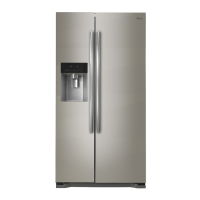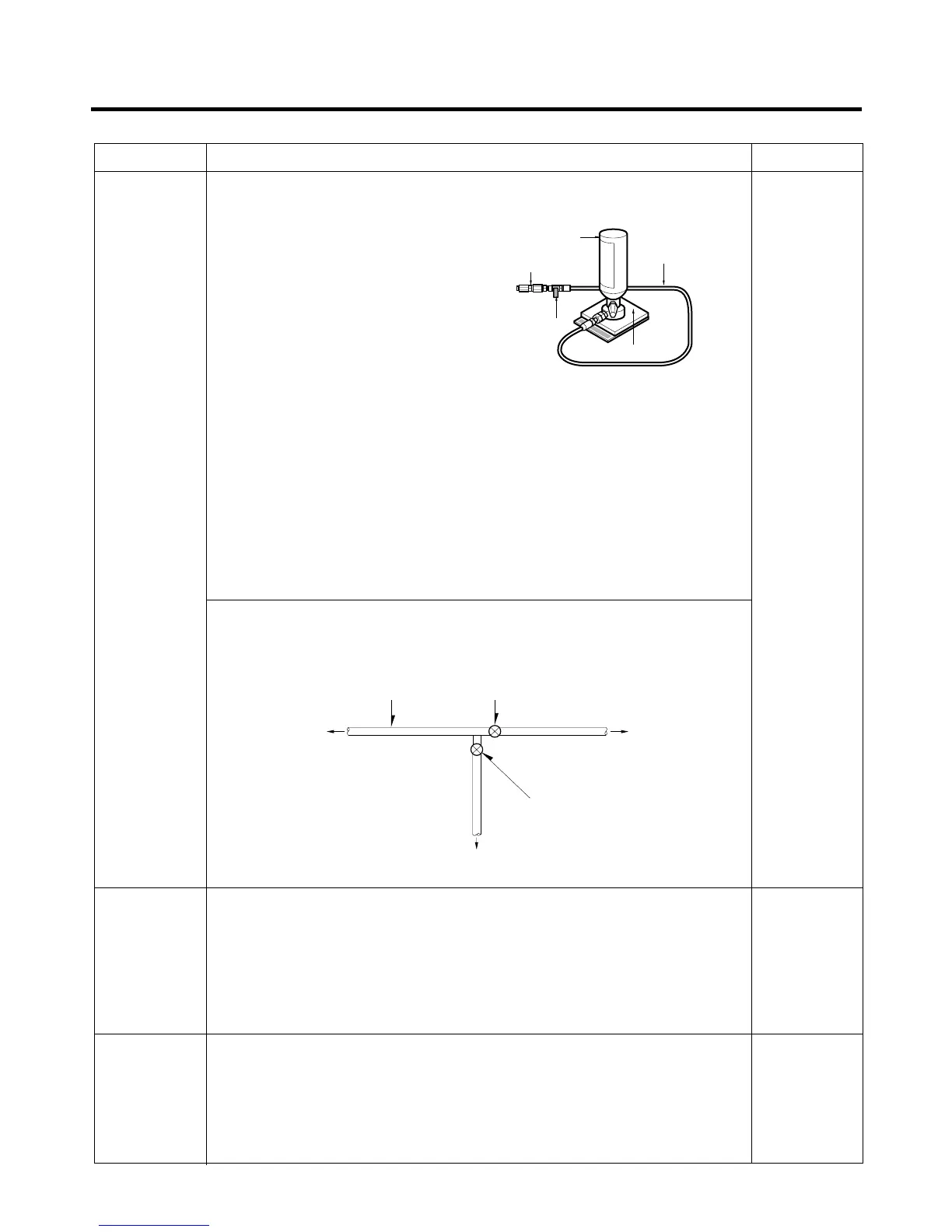- 124 -
TROUBLE DIAGNOSIS
Item Precaution Utilities
4. Recharging
process
5. Leakage
Test
6. Cycle Check
Refrigerant
Cylinder
Hoses
Portable
Leakage
detector
• After the system is completely
vacuumed, fill it with the refrigerant
R600a up to what has been
specified at your refrigerator Name
Plate.
• The amount of refrigerant (R600a)
must be precisely measured within
the error of ±2g by an electron
scale.
• Connect the charging hose (that is
connected to the refrigerant
(R600a) cylinder) to the Schrader
valve installed on the service tube.
• Then, charge the refrigerant (R600a) by controlling the Throttle valve.
• When you do so, do not fully open the Throttle valve because it may make
damage to the compressor.
• Gradually charge the refrigerant (R600a) by changing open and close the Throttle
Valve (5g at each time).
• The charging hose must use a one-way valve to prevent the refrigerant refluence.
• Close the Schrader valve cap after the refrigerant (R600a) is completely
recharged.
• If you use the manifold connected with both the refrigerant (R600a) cylinder and
the vacuum pump simultaneously, make sure the pump valve is close.
• After you completely recharge the refrigerant (R600a), perform the leakage test by
using a portable leakage detector or soapy water.
• Test the low pressure (suction) parts in compressor off time and high pressure
parts in compressor on time.
• If the leakages are found, restart from the refrigerant (R600a) discharging process
and repairs defects of leaks.
• After the leakage test, check the temperature of each parts of the cycle.
• Check with hands if the CONDENSER and the case (HOT-LINE pipe) that is
contacted to the door gasket are warm.
• Confirm that frost is uniform distributed on the surface of the EVAPORATOR.

